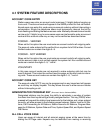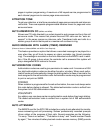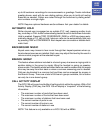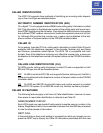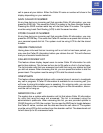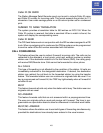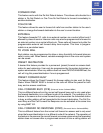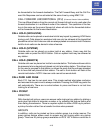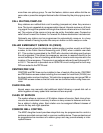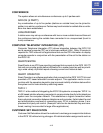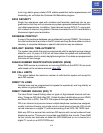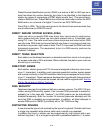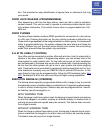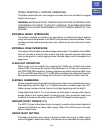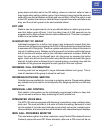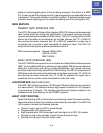more than one pickup group. To use this feature, station users either dial the ac-
cess code or press the assigned feature button followed by the pickup group num-
ber.
CALL WAITING/CAMP-ON
Busy stations are notified that a call is waiting (camped-on) when they receive a
tone. The tone is repeated at a programmable interval. Keysets receive an off-hook
ring signal through the speaker and single line stations receive a tone in the hand-
set. The volume of the camp-on tone can be set by the station user. Camped-on
calls follow Forward No Answer if a Forward No Answer destination has been set.
Optionally any station can be programmed to automatically camp-on to a busy
station instead of having to press the camp-on button or dial a camp-on code.
CALLER EMERGENCY SERVICE ID (CESID)
This is a service where the telephone system sends a number, usually a call back
number, to the Public Service Answering point (PSAP) when a station user dials
911. This number is associated in the PSAP with a location indicating exactly where
the call originated. This allows the emergency services to respond directly to the
correct building or floor of a building rather than to have to make inquiries as to the
location of the emergency. This service is sometimes referred to as Enhanced 911
or E-911. This service is provided via an ISDN PRI circuit configured for both way
DID connected to the TEPRI card.
CENTREX/PBX USE
CENTREX and PBX lines can be installed in lieu of central office trunks. CENTREX
and PBX feature access codes including the command for hook-flash (FLASH) can
be stored under one touch buttons. Toll restriction programming can ignore PBX or
CENTREX access codes so that toll calls can be controlled when using these ser-
vices.
CHAIN DIALING
Keyset users may manually dial additional digits following a speed dial call or
chain together as many speed dial numbers as are required.
CLASS OF SERVICE
The system allows a maximum of 30 station classes of service. Each class of ser-
vice can be customized in memory to allow or deny access to features and to de-
fine a station’s dialing class. Each station can be assigned different classes of
service for day and night operation.
COMMON BELL CONTROL
The MISC daughter board provides relays that may be programmed to control a
customer-provided common bell or common audible device. These contacts must
be programmed as members of a station group and may provide steady or inter-
rupted closure.
4.11
HOME
PAGE
Table of
Contents



